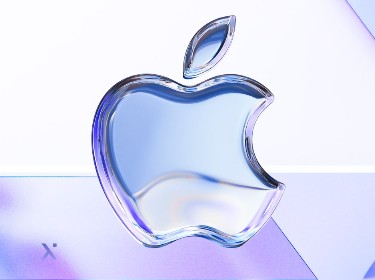Do you remember the time when we all played Snake on our Nokia phones? Mobile games have become far more sophisticated since those days. But the question is: what should we expect next from the industry? Let’s find out.
Mobile gaming has become a large industry in recent years, overcoming console and PC gaming. According to Statista, in 2020 the number of active mobile gamers worldwide reached 2.4 billion. The growing popularity of the mobile gaming industry leads to the continual development of new games aiming to fulfill the market’s demand. And if you are still wondering about the future of mobile gaming, here are some interesting numbers for you:
- Gamers spent $100 billion on mobile games in 2020, according to AppAnnie
- Player spend is expected to reach $138 billion by 2025, according to SensorTower
Now we’ve established that mobile game development is a very promising field, the next question that comes to mind is how to develop a profitable game? You won’t be surprised if we say that hiring mobile development consultants will help you assess your idea and develop a clear project strategy. But there’s another important thing you should pay attention to, which is mobile gaming market trends.
In this article, we will cover the most important trends to watch out for.
What is the current state of mobile gaming?
We all know that the Covid-19 pandemic ruined many businesses and that it’s still having a negative influence on many more. However, not all industries experienced such difficulties. For instance, the pandemic had a positive impact on the development of the mobile gaming market, which experienced massive growth.
With people being confined to their homes mobile games became a simple, easily accessible, and convenient channel that brought fun to a lot of users. In 2020, the market recorded 12% more players compared to 2019, with over 2.5 billion players. On average, players spent 4.2 hours a day on mobile gaming generating a massive turnover of $77.2 billion.
Moreover, technological advancement like cloud gaming services and mobile esports, and the use of trending technologies such as AR and VR for game development, have contributed to the industry’s popularity, making games more entertaining and immersive.
Another big factor in the rise of mobile games is the development of gametech. The development of Unity, Unreal, and other game engines empowers developers to build more creative and engaging products. We’re also seeing improvements in the development of ad-tech and other monetization tools, which enables developers to get more profit from their products.
The demand for mobile games does not seem to be slowing down. According to AppAnnie, in March 2020 weekly mobile game downloads surpassed one billion for the first time, and have remained at that level. Moreover, user penetration is expected to reach 28.5% by 2025.
Need assistance with mobile game development? Reach out to the PixelPlex team
Trending mobile game genres
Mobile game industry analysis shows that currently the most popular mobile game genres are hyper-casual games, shooters, and RPG games. Let’s take a closer look at each genre.
![]()
Hyper-casual games
Hyper-casual games that usually focus on a single core mechanic still top the charts, accounting for one-third of mobile game downloads in the first half of 2021, according to AppAnnie. Popular examples like Coin Master, Monster Strike, and Candy Crush can more easily compete with games that are usually played on a PC or console. These games are simple to play and don’t require any specific skills, so we can expect their popularity to continue growing throughout 2025. Moreover, thanks to their ease of playing, hyper-casual games are the ones that will most easily convert non-gamers into players.
One of the most successful subgenres of hyper-casual games is puzzles or logic games. Among the most popular are Castle Raid, Candy Crush Saga, Comics Bob, and Thief Puzzle.
Because the puzzle games market is now saturated, developers are trying to add new and interesting elements to attract a larger audience. One recent trend is adding meta-layers to the core gameplay to make Match3 gaming even more immersive. The meta-layer is mainly used for building houses, gardens, etc., or character collection. The most popular examples of games using meta-layers are Homescapes and Project Makeover.
Shooter games
Focusing mainly on speed and reaction and providing users with comprehensive characters and scenes, shooter games continue to be popular among players that want to kill time with their smartphones. Research carried out by AppAnnie shows that in the first half of 2021, games featuring shooting, action, and similar genres made up about half of the total time spent in games globally. Social features that dominate in these games will continue to cultivate deeper play while ensuring player retention.
Top shooter games all offer a similar set of features, such as daily login rewards, a player level system, card collection, and items in battle. One of the most popular shooter games, dominating in 2021, is FreeFire. It’s an action-packed Battle Royal game that commands 1 of every 4 minutes spent in games globally. Other examples that you should consider when developing your shooter game are PUBG MOBILE and Call of Duty: Mobile.
Role-playing games
Role-playing games (RPGs) are games where each player assumes the role of a specific character. RPGs stay popular among gamers all over the world by incorporating social features, exciting quests, and fantasy characters. Thanks to features such as Team Battle and multiplayer possibilities, RPGs are among the most successful genres for app store monetization. Among the top RPGs are Monster Strike, Cookie Run: Kingdom, and Fate/Grand Order.
However, one of the most successful examples of RPGs is Genshin Impact – a game with beautiful graphics, challenging gameplay, and a load of cues. The game made over $1 billion in revenue within six months of its release. As of July 2021, it has surpassed Pokémon Go and became the number one game by lifetime consumer spend. The success of Genshin Impact proves that the mobile gaming market continues to be a profitable niche, attracting more and more investors and entrepreneurs.
Take a look at our game development portfolio to gain useful insights
Trending mobile game features
The mobile industry is often where new technologies and market trends are adopted first. From triple-A experiences to extensive use of 5G, we should expect many interesting features and mobile gaming industry trends coming along in 2025 and beyond. To stay ahead of the curve, IT consulting services for the gaming industry can provide valuable insights into emerging technologies and help developers make informed decisions about incorporating these trends into their games.
The rise of AAA mobile gaming experiences
Gamers have been seeking high-fidelity gaming experiences on their mobile devices for a long time. It’s expected that the success of Genshin Impact with its superior graphics and open-world gameplay will encourage large game publishers to bring the AAA gaming experience to the mobile market.
Moreover, the performance of modern high-quality smartphones is extremely high, which should lower the entry barriers. So it is expected that more publishers and developers will start bringing immersive mechanisms from the triple-A console to the mobile platform.
Emphasis on social and engagement elements
In 2020-2021, users started to prefer multiplayer games that offered ways to interact and connect. Because of the pandemic, people started paying more attention to online social experiences, so more and more games began to incorporate social features. According to AppAnnie, two-thirds of the most popular mobile games have at least one social feature. For instance, Call of Duty: Mobile offers hangout rooms for their players while Coin Master encourages players to connect with their friends on Facebook and provides them with extra rewards for that.
These days, some of the most common social elements that can complement a mobile game and increase user engagement are in-game chats, social media connection, co-op modes, and PvP modes. Moreover, game developers have started paying more attention to adding engagement elements such as recurring events. These reward players with unlimited lives and boost their engagement. Data analytics services for the gaming industry can play a key role here, providing insights into player behavior and preferences to optimize social features and engagement strategies.
The growing popularity of mobile esports
According to Newzoo, in 2020 the number of mobile esports viewers reached almost half a billion. The popularity of esports continues to grow, so it is expected that mobile esports will be one of the biggest trends in 2025. This trend may make mobile developers rethink how they evolve their games. For example, one possible innovation would be to consider integrating with streaming channels, which would enable mobile gamers to play and stream their games.
Incorporating streaming into your mobile game will open up great promotion opportunities, both paid and free. From watching other gamers playing your game, people may also want to download it, which will lead to an increased user base and greater revenue.
AR to enhance the real-world environment
One of the current mobile gaming trends is augmented reality (AR), which allows you to merge your virtual game characters with real-world environments, thus providing a more immersive user experience. The use of AR also allows game developers to come up with new ideas and some interesting gameplay mechanics, for example 360-degree play.
An increasing number of smartphone devices use Apple’s ARKit and Google’s ARCore to deliver AR-based gaming experiences. The rise of 5G will see this trend continue. It is estimated that the revenue of the AR and VR market will reach $161.1 billion by 2025, according to a report from VYNZ Research. Mobile development services for the gaming industry are essential for leveraging these AR capabilities and creating innovative and immersive gaming experiences.
Take a look at how we leverage AR for mobile app development
The rollout of 5G
5G is ready to change the future of mobile gaming, making mobile phones the device of choice for many gamers. Continued improvements to network infrastructure and government support will contribute to 5G adoption.
Another major driving force for the adoption of 5G is the iPhone12 series in Apple’s key markets, such as the USA, Japan, and China. According to Newzoo, the number of active smartphones that will be 5G-ready by the end of this year will reach 700 million, and by 2023 there was 2.1 billion 5G-ready smartphones.
One of the biggest benefits of 5G is its speed; it’s 20 times faster than 4G. What does it mean for a mobile game? It means that you can download 10 games over the 5G network before 4G will deliver even the first half of one game. Along with the fast speed and low latency that 5G will bring, it will also contribute to the wider adoption of AR and VR.
Increased cross-platform play
Technologies such as the Unity game engine will encourage multi-platform development. The mobile market now has the fastest-growing rate of all platforms, so porting PC and console games to the mobile platform is a reasonable choice if you want to extend your audience. More and more gamers want to play high-fidelity games both on their consoles and their mobile devices, so we should expect the trend towards cross-platform play to accelerate during 2025.
Monetization insights and trends
Apple’s change in their usage of Identifier for Advertisers, also known as IDFA, will make mobile marketers reconsider how they carry out target advertising. They will no longer be able to deliver customized advertising by tracking user device data such as when a user triggers an in-app event. IDFA’s removal will affect all mobile genres and we expect that it will lead to the appearance of new campaign structures and result in more cross-team integrations between developers, analysts, product and creative teams. One thing is clear: in 2025, mobile game publishers and marketers will need to find out how to make their ads stand out. This is where AI services for the gaming industry can be incredibly valuable, enabling developers to analyze player behavior, personalize ad experiences, and optimize monetization strategies in a privacy-conscious way.
![]()
Key monetization trends are focusing on First-Time User Experience (FTUE), a hybrid approach towards the in-app purchase model, and the use of subscription-based monetization.
- According to Newzoo, we will see a more aggressive approach to FTUE. Due to the complex mechanisms of iOS 14’s new advertising framework, which is known as SKAdNetwork, optimal user registration and onboarding processes will be a must.
- According to AppAnnie, a growing mobile gaming monetization trend is using a hybrid approach and combining the in-app purchase model with the in-app advertising model. In Japan, the market share of games that leverage in-app purchases and also apply advertising monetization increased from 14% in 2019 H1 to 20% in 2021 H1.
- Another popular trend among the top-grossing mobile games is applying subscription-based monetization. Some popular examples are Battle passes (e.g., PUBG Mobile), Booster subscriptions (e.g., Boom Beach), and VIP Access (e.g.Wheel of Fortune). But bear in mind that the subscription-based monetization model is mainly used as an additional monetization opportunity. Most commonly, games use it alongside in-app purchases to achieve the desired results.
Current audience and Geo trends
In order to create effective marketing strategies, it’s important to understand which audiences are more attracted to which games. For instance, Match 3 games like Candy Crush or Homescapes tend to be more popular among Millenials and Gen X, while social and multiplayer games like Among us! and ROBLOX are popular with younger demographics.
Another factor to consider when developing game features and building marketing campaigns is gender preference. According to AppAnnie, games such as Among us! and ROBLOX tend to be chosen by female players, while Pokemon Go, Call of Duty: Mobile, Clash Royale, and PUBG Mobile are mostly played by male audiences. Other games popular with female audiences are Wordscapes, Project Makeover, Minecraft Pocket Edition, and Subway Surfers.
![]()
Asia Pacific and the US are the major hubs that dominate the mobile gaming market. The US remains one of the largest markets showing exponential revenue growth. In Q1 2021, US game revenue growth reached 34% year on year. Asia Pacific is still the largest region for consumer spending in mobile games. AppAnnie reports that this region accounts for over 45% of the entire market share.
Among other markets that we advise you to look at in 2025 is India. Smartphone penetration in this country continues to increase, making it one of the largest markets for mobile game downloads. This could partly be explained by Covid-19, which increased game adoption in the market by 64%. Other growing markets to consider are Brazil and Russia.
Conclusion
The mobile gaming industry is on the rise, and is the most promising area for new development. It is seeing dynamic improvement thanks to the development of new technologies and game engines, the appearance of new monetization strategies, and the quick adoption of modern trends.
Prior to developing a new mobile game, we recommend that you analyze industry trends to ensure your game’s success. We also suggest reaching out to mobile app consultants who will evaluate the feasibility of your idea and help you develop a winning strategy while ensuring that your solution effectively uses current mobile trends.
If you are planning to develop a powerful mobile gaming app, don’t hesitate to contact our application development services team. With 10+ years of experience in the field and a deep understanding of the mobile gaming domain, our custom Android app development services experts, iOS mobile app design and development services team, as well as cross platform app development specialists can help you develop a mobile game that engages users at every touchpoint.




